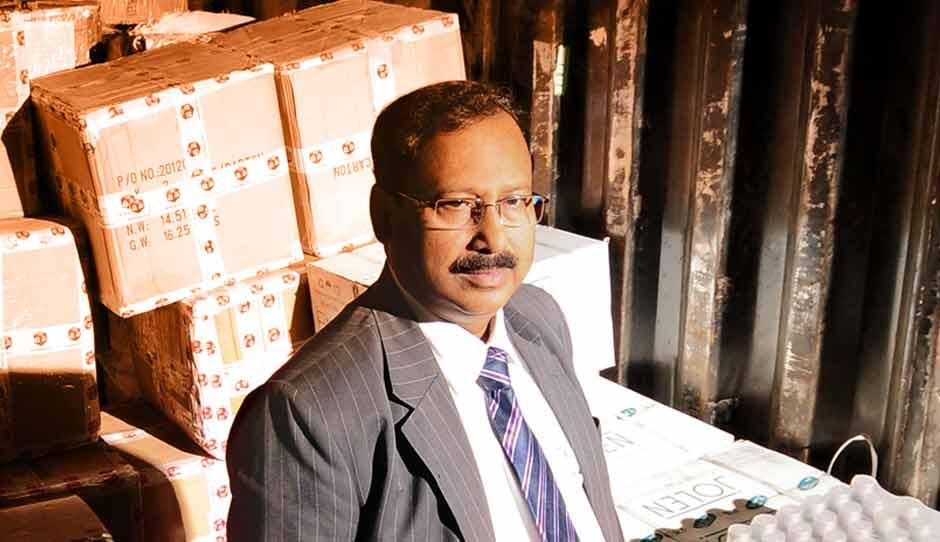How Subhasish Chakraborty Packaged DTDC's Success
- BY Ira Swasti
 In
In  31806
31806 0
0

When your company becomes the subject of case studies the world over, clearly you’re doing something right. Subhasish Chakraborty, the founder of DTDC Courier & Cargo, was a quick learner. Within the first year of launching his courier delivery services, Chakraborty figured out the formula for growing big in this industry—a strong network. Twenty two years on, his Rs450-crore company reaches 10,000 pin codes in India and covers more than 240 global destinations including the US, UK, Canada and China. The credit, he says, goes to their 5,900-people strong team and a robust franchisee model of nearly 5,750 franchises.
I was born in a lower-middle class family in Kolkata. We didn’t have money to pay for my college so as I pursued my chemistry honours from Ramakrishna Mission Residential College, I also freelanced at Peerless Insurance. In those days, ambitions were very clearly laid out. One was expected to complete your graduation, get good marks and follow that up with a good job. I’d fallen in love with chemistry, and was a gold medallist in my college. Yet, I continued working at Peerless even after completing my bachelor’s as I simultaneously studied for my advanced course in chemical engineering.
Around 1981, B K Roy, the managing director of Peerless which was then a Rs5,000-crore insurance agency told me that even though the company was performing well in the northern, eastern and western regions of India, it wasn’t doing well in the south. Mr Roy encouraged me to go to Bengaluru to build their company there. I was a good performer at Peerless, and he showed great faith in me. So I took his advice and landed in Bengaluru that year.
After building Peerless in Bengaluru for six years, I realised I had learnt enough to start my own business. Because of my chemical engineering background, I wanted to begin a chemical production enterprise. But I knew to be successful there I must learn the distribution side of the business. In 1987, I started a small distribution agency in Bengaluru, Chennai and Hyderabad to understand the dynamics of distribution. I begun using conventional postal services but the experience wasn’t great. So I switched to couriers.
While dealing with one of these courier companies, I realised there was a big gap between what postal services offered and what customers required. I studied this particular courier company for a month or two and found the business very interesting. It struck me that I should start a courier company of my own. And, DTDC Courier and Cargo was born in 1990.
Because I already had a small distribution channel in Bengaluru, Chennai and Hyderabad, I decided to target my courier services in the south to begin with, with a plan to expand to the rest of India later. While working for DTDC, I realised the growth opportunities in courier services were more than what a chemical production business could provide. So I closed operations of my chemical distribution agency and focused solely on DTDC Courier.
With the limited capital I had, I had initially thought I’d focus only on the main cities in the south. But my customers needed products to be delivered to Mysore, Mangalore and Hubli. They didn’t think connectivity to Kochi would suffice their needs. It was clear that I needed to go into the interiors of Kerala, Tamil Nadu and Andhra Pradesh. That was the key to making this business work—having a vast, far-reaching network.
The key to my success has been my relationships with people. If you can make your dream their dream and, their dream your dream, it’s easy to work and grow together in business.”
Other courier companies were busy setting up offices in the interiors and smaller towns already. But, this was an expensive proposition. I didn’t have tens of lakhs to invest in creating that network. Armed with a business plan, when I went to the bank to ask for a loan, they blankly refused. In those times, there were no venture capitalists who were ready to invest in a business if you showed them a well-chalked out idea and a market opportunity. You either needed high-value property to offer as security or have a godfather who could back you up. I had neither. To ease my financial crunch, I tried a few chit funds. I also sold our family jewellery but that money vanished soon. That’s when I realised—there must be hundreds of thousands of people like me who want to build companies but can’t.
This is when I thought of designing the franchisee model for our business in 1991. DTDC was the first supply chain and logistics company in India to introduce the franchisee model. Franchising is a double-edged tool. Yes, working with franchisees eases your need for capital but it also necessitates a huge focus on quality control. To ensure that each one of our franchisees lived up to our standard of quality, we developed a comprehensive structure. We’re much bigger now, yes. But, even when we began, we divided the company into four zones which are further bucketed into regions. These regions are further segregated into areas and finally, branches. Each branch controls between 20 to 30 franchisees.
For the first five years of our operations, our focus was to build a strong services network. Once we had that, the challenge was to manage all those people. You can’t manage such large numbers manually. We used to give customers information about their order either over the phone or in person. Doing that for lakhs of people across the country was not possible. We had to digitise our operations so that customers could track their orders on their PCs and we could maintain our records effortlessly.
By 2000, we had developed a fantastic software to manage and track all assignments online. We digitised our main offices and then developed a scheme to provide computers, printers and scanners to all our franchises. Having created a pretty strong network in India, in June that year, we decided to expand abroad. Starting with UK, we moved to the US, the Middle East and then UAE. Just last year we entered Canada and Singapore and in March this year, we expanded to China. We invariably go to countries where Indians or Indian businesses are operating because that brings us more business.
We usually design our services map according to the requirements of customers too. For instance, if a customer says we already have good connectivity in Darjeeling, we need services in Kalimpong, we see if a franchise is available there and we bring that location on our map. The other way is when we build a last-point railway line. What we do is we calculate the number of remote or inadequately-connected stations between the first and the last point, and establish operations in those locations.
Today we have 5,750 franchisees on board. One key understanding has helped us with this—when you work with people, if you can make your dream their dream and their dream your dream, it’s easy to work and grow together. I started this business with only Rs20,000 capital and it has now grown to a turnover of Rs450 crore.
Take a look at DTDC's Supply Chain of Happiness Campaign launched in celebration of reaching the 25 year milestone in 2014.
The key to my success has been my relationships with our partners, clients and employees. We have almost 6,000 employees in DTDC and no employee unions till date. That’s because we have an open culture of sharing information about our company, whether good or bad, with employees, franchisees or clients. There are some things that, as an organisation, isn’t in our control. It’s best to be transparent at those times. Very often, flights and trains carrying our cargo get delayed. We can’t control that. But, we can control our relationship with our customers, and how we communicate with them. When unexpected, unavoidable delays happen, our teams have been trained to go back to the customer and inform them.
In 2006, Reliance Capital bought 40 per cent stake in our company for Rs70 crore. That was the turning point for DTDC. We were just a Rs140-crore business then. Beyond just having capital to help us expand, when a company like Reliance Capital invests in your company, people suddenly begin to look at you differently. They know you must be doing something right for a Reliance to invest in you. Nearly every top company in India—Wipro, Infosys, Tatas—began using our services after that. That Reliance deal did wonders for our brand value.
In business, when you make big decisions like the Reliance deal was for us, you need to balance your gut and instincts. For me, both those approaches have equal importance. I try and play one off the other. If my gut points to something, I analyse and calculate the risks of it turning out to be bad. But it works the other way round too. If logic says this deal will turn out to be good, I eventually listen to my gut to arrive at a final decision. Thankfully, all my decisions so far have been successful for the business.
It’s just the beginning though. Last year, we grew at a record 38 per cent. It was our best year yet. But we need to make brand DTDC much stronger and more visible. Our aim for the next few years is to brand all our franchises from Leh to Kanyakumari, with the same logo, interior designing, look and feel. Beyond the company, what gave me greatest pride is when we crossed 5,000 employees and 5,000 franchisees in 2010. I come from a very humble background, and I feel tremendous satisfaction that I have been able to create so many jobs. In fact, with the DTDC Institute of Supply Chain Management, which we set up a few years back, we have been able to provide employment to so many people from humble backgrounds who really needed jobs.
After establishing ourselves in the courier industry, we are all set to open new verticals. This year we plan to launch our e-commerce project to provide surface transport and warehousing for e-commerce businesses. We also plan to launch 500 retail stores in the next few years, that will provide almost every service element a customer can think of—air tickets, train tickets, mobile recharges.





























Add new comment